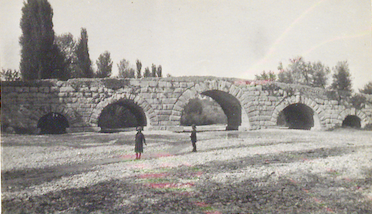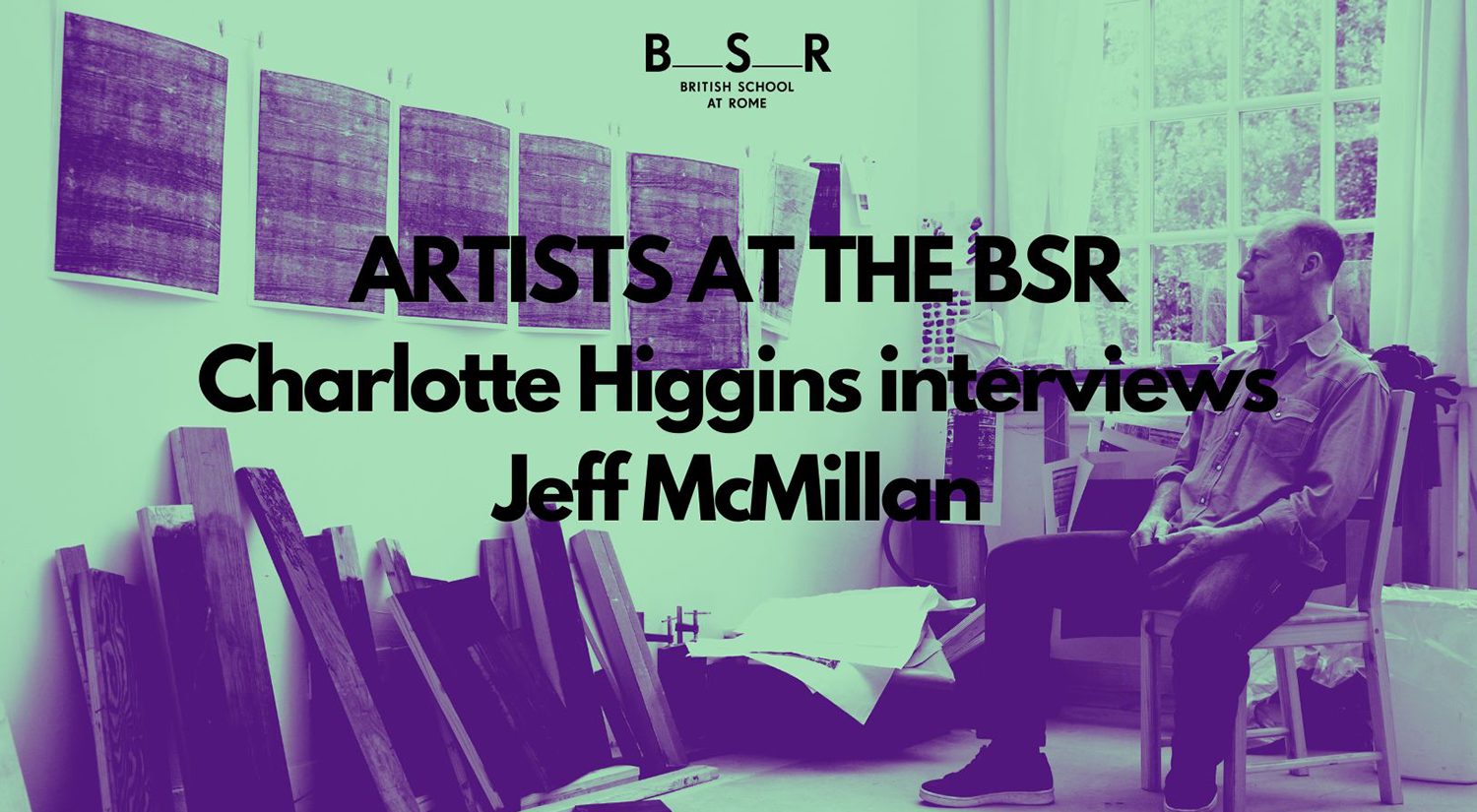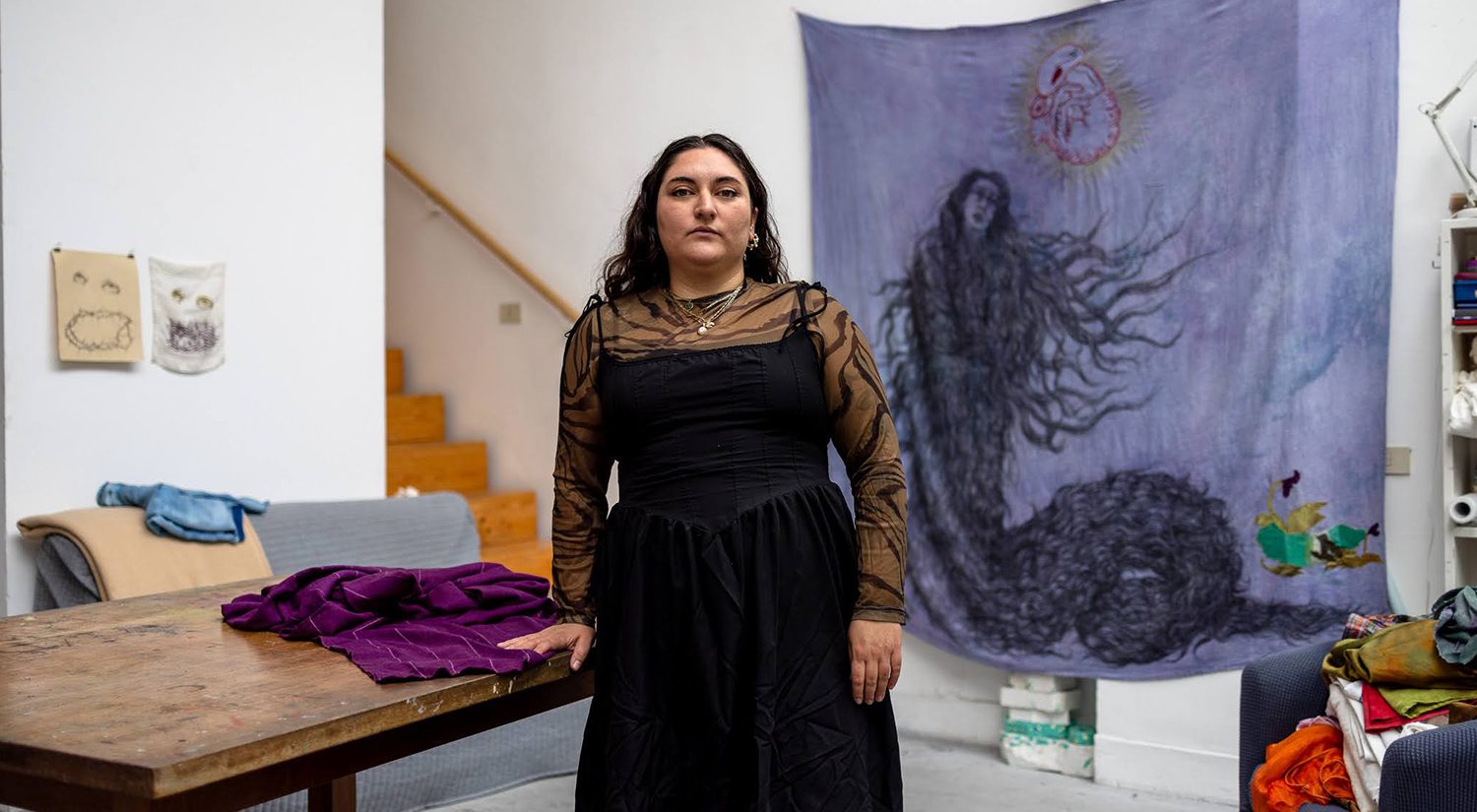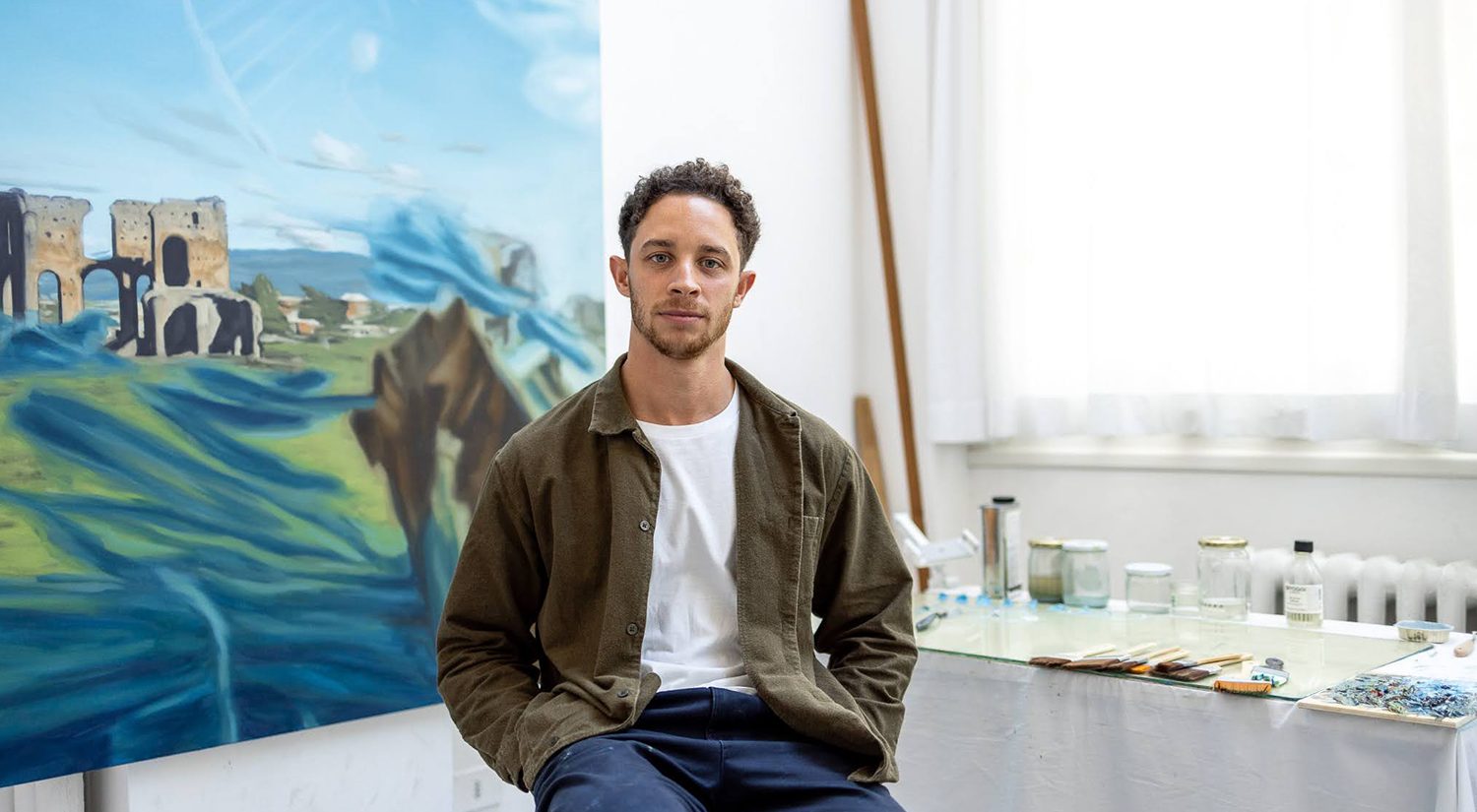Janet Wade is a former Macquarie Gale-BSR Award holder and one of the inaugural 2020 BSR Library and Archive Award holders. She is an ECR Affiliate with the Centre for Ancient Cultural Heritage and Environment (CACHE) and was recently at the BSR conducting research for an Australian Academy of the Humanities Travelling Fellowship. Her current project investigates ancient Roman roads and their surrounds through the juxtaposition of contemporary remains and photographs with 19th and early 20th-century photographs and archive materials from the BSR.
This blog post provides an insight into Janet’s work with the BSR Archivist, Alessandra Giovenco, and their recent research trip to Umbria. The post also coincides with the publication of Janet and Alessandra’s two recent articles in the 2022 volume of the Papers of the British School at Rome.
It was still dark when Alessandra and I met on the steps of the British School at Rome at 5am on a warm morning in July (Photo 1). We were bleary-eyed but keen to start our day early to beat the heat; the forecast at our first stop in Umbria was 43 degrees Celsius. We had planned a day of hiking to a Benedictine abbey, traipsing through fields, sliding down dry riverbanks, and climbing rocky paths in search of traces of ancient Roman bridges. We had packed plenty of fresh fruit and water and, most importantly, a camera and a willingness to explore. Stored on my mobile phone were copies of 19th and 20th-century photographs of Roman bridges, roads, and the Umbrian countryside. Alessandra and I were following the trail of early topographers and amateur photographers who visited the sites captured in the photographs; men and women who set off on their expeditions from the same steps at the BSR over a century ago, albeit carrying far less portable camera equipment than we had in our backpacks.

On that hot summer day, we were on a quest to reproduce a collection of 19th and 20th-century photographs of three Roman bridges along the Via Flaminia near the Umbrian town of Narni. The BSR holds a substantial collection of images taken on research and exploratory trips from Rome by Thomas Ashby (BSR Director from 1906 to 1925), several of his friends and colleagues, and former award holders at the school. These women and men include Dora and Agnes Bulwer and Reverend Peter Paul Mackey, talented British amateur photographers who were friends of the BSR and accompanied Ashby on some of his excursions, and visiting scholars at the school like Arnold J. Toynbee and R.A.L. Fell. Both Toynbee and Fell were at the BSR in the years before and after the First World War respectively and they–and other BSR award holders like them–played an essential part in Ashby’s extensive research work on the Roman roads and countryside of Italy. They helped to survey and document the extant remains of the roads in their time, and to collect the invaluable research data and photographs that went into Ashby’s many publications. My recent article, Expeditions from Rome: Thomas Ashby, his BSR companions and the Roman roads of Italy in Papers of the British School at Rome (vol. 90), discusses Ashby’s significant legacy in regard to his research on the ancient roads and topography of Italy, and highlights the important role played by people like Fell and Toynbee in keeping Ashby’s incredibly ambitious research vision alive.

In October 1911, Ashby and Toynbee conducted a tour along the Via Flaminia in Umbria, with stops in and near Narni. Ashby took a number of photographs on their trip. Alessandra and I discuss Ashby and Toynbee’s detailed 1911 itinerary and photographs (and other research trips by Ashby and BSR award holders) in a second article called Road trips, rail journeys and landscape archaeology, also in the 2022 volume of the Papers of the British School at Rome (vol. 90). Unlike Ashby and Toynbee, Alessandra and I did not catch the train and ride bicycles from Rome to Narni. Instead, we drove to our first stop of Ponte di Augusto (Bridge of Augustus), where the ancient Via Flaminia crossed the River Nera below the town of Narni (Photos 2 and 5). We photographed the spectacular bridge and nearby town from various angles before hiking up to the Abbey of San Cassiano. The abbey has sweeping views of the hills, valleys and countryside surrounding Narni, and its more modern and industrial counterpart, Narni Scalo. It is the perfect spot to see the Bridge of Augustus and the River Nera in their surrounding environs, and to compare the modern topographical surrounds of the bridge with the predominantly rustic landscape recorded by the Bulwer sisters, Mackey, and Ashby in the 19th and early 20th centuries. Today, the bridge is subsumed within a semi-urban environment. From afar, it is no longer an imposing sight, nestled as it is between the nearby modern bridge and road, several factories, and a lofty industrial smokestack. Yet, despite the noticeable transformation of the landscape, the beauty and tranquillity of the Umbrian countryside into which the spectacular Roman bridge was built is still tangible (Photos 3 and 4).

Next on our itinerary was Ponte Calamone, a Roman bridge on the ancient Via Flaminia only a few kilometres to the north. The modern road runs over the bridge which was rebuilt after it was destroyed in WWII. We were not expecting to see the bridge in its original state, but we were hoping for at least a few ancient blocks in the riverbed. We also wanted photographs of the bridge in its current state to compare to the images taken by Mackey and Ashby prior to WWII (Photo 6). What we encountered instead was a field of long weeds and a gully full of sunflowers blocking our path to the bridge. When we scrambled down the riverbank and tried to walk along the dry bed to the bridge, we were further impeded by thorny bushes, the sound of unknown animals in the undergrowth, and a toxic green sludge that made us immediately turn back! The bridge was only 40 or 50 metres away … so close, but so far.


The short drive from Ponte Calamone to Ponte Caldaro was far more rewarding (albeit less adventurous). Still used today, Ponte Caldaro also suffered extensive damage at the end of WWII but was reconstructed using many of the original blocks. The photographs of the site by Ashby and Fell in 1920–21 are invaluable records of the bridge prior to its wartime destruction (Photo 7). It was in an impressive state during their time, but the bridge is now an incongruous mix of modern and original blocks (but still a marvellous example of Roman bridgework, in parts).

Our photographs of Ponte Caldaro provide a striking contrast to the images taken by Ashby and Fell a century ago, and they highlight the significant transformation that has occurred to the bridge and its immediate surrounds over the course of the 20th and 21st centuries (Photo 8). From Ponte Caldaro, Alessandra and I returned to Rome (after stopping for a cool drink and a snack in Narni Scalo, of course). It had been a hot, but productive, day. We had collected a variety of photographs of Narni’s Roman bridges to compare to the wonderful images taken by those intrepid topographers and explorers whose trail we were following.

A series of comparative photographs of sites throughout Italy, utilising archival images from the 19th and 20th centuries, and modern reproductions, form the basis of my current research project. Several of the images taken on our trip to Narni will be displayed alongside photographs by Ashby, Fell, Mackey, and Dora and Agnes Bulwer in a virtual exhibition coming soon to the BSR. Watch this space!
The articles referenced in this blogpost will be published in the 2022 volume of the Papers of the British School at Rome.











